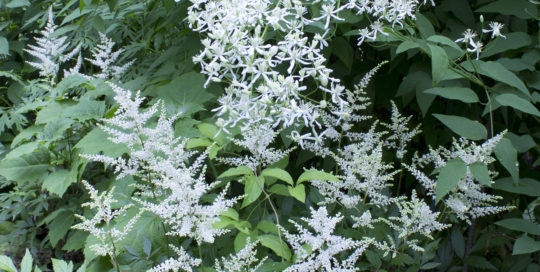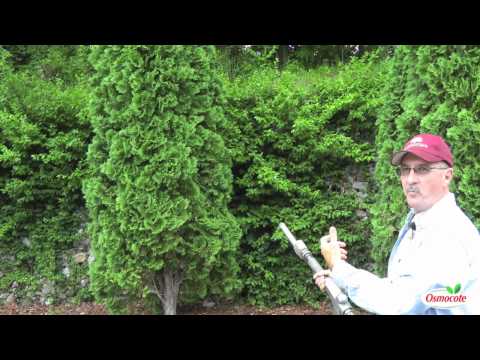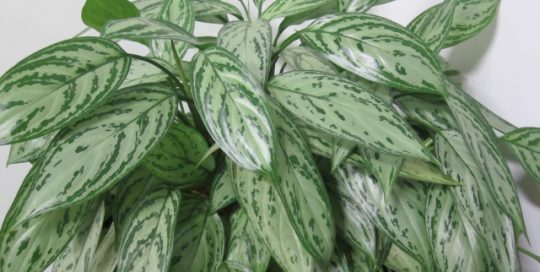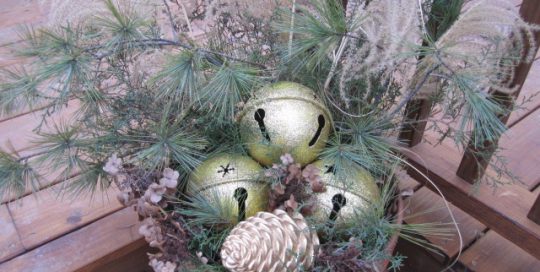It’s only a matter of time before our gardens are covered by winter precipitation. And that’s not always the pretty white, flaky kind. First comes the rain—more than we think possible—to beat down any plant still standing.
If you have lots of trees that shed their leaves, one of the best reasons for raking most of them off the flower beds is so that you can see the green. Yes, there can be green (or shades thereof) after November. And there is something uplifting about seeing it from your windows.
You can give yourself something to look at from November through March by including miniature and dwarf conifers. You can go well beyond that by combining them with evergreen groundcovers.
A Violet Grown for its Leaves
Viola ‘Silver Gem’ was discovered in Bib County, Alabama in 2003 and introduced in 2010 by Mt. Cuba Center, a botanical garden and native plant conservation champion in Hockessin, Delaware. The plant’s name couldn’t be more apt, with its silvery foliage hugging the ground in some of the most inhospitable locations while sending up tiny jewel-like flowers in the spring and intermittently throughout the summer.
‘Silver Gem’ grows no more than five inches tall and spreads slowly in the deepest of shade beneath moisture-hogging trees. It spreads and blooms with a bit more conviction if given a brighter position and supplemental moisture. The little American native violet is hardy to Zone 6 (to Zone 5 with protection). It is widely available through many nurseries.
Epimedium is a Very Tough Customer
Some of the toughest groundcovers are Epimedium. Of several common names—barrenwort, bishop’s hat, fairy wings, and horny goat weed—only the reference to fairy wings evokes the image of the leaves born on nearly all of the species. The flowers of Epimedium float above the plant on wiry stems. The blossoms suggest fanciful dancing spiders in colors including white and yellow and a range of pale pink to deep purple.
While some lose their leaves when the cold comes to stay, many are considered evergreen. One evergreen variety that hits the ground running, and covers any shady space fairly quickly, is Epimedium ‘Sulphureum’. This clump-forming perennial grows 8-12 inches tall and thrives in deep to partial shade. The leaves hold up quite well through most winters, emerging fresh and green through several snow events.
Varieties
Epimedium ‘Domino’ has a lot going for it. From its delicately narrow new foliage to its deep purple bicolored flowers, it deserves a place in any shade garden. Considered semi-evergreen, it’s surprisingly perky throughout early winter, although its leaves are solid green at the end of the season. This 12-18 inch-tall perennial is a restrained spreader, playing well with other plants like ferns and coral bells.
The rarest Epimedium in my garden is Epimedium ecalcarata, which I planted four years ago. It currently covers a space barely a foot in diameter. I’ve also had to “protect” it from being obliterated by its stronger neighbors. Its toothed, leathery leaves, which hover about 8 inches over the ground, are tough enough to rate being slotted in the evergreen category. Its new leaves are deep red and its flowers bright yellow.
The Chicago Botanic Garden published its Epimedium Evaluation in 2003, which tested for hardiness and ability to grow in more different soils.
About Evergreen, Deciduous, and Semi-Evergreen Epimediums
Deciduous: There are advantages to deciduous varieties. They drop their leaves cleanly after the first couple of frosts. There is no need to remove them before next year’s growth begins.
Semi-evergreen: This group can hang onto its leaves into December if the weather is mild. Alternatively, if they are protected through the worst of winter with a persistent snow cover, they’ll emerge partly-green when the snow melts in the spring.
Evergreen: While the “evergreen” label in climates colder than Zone 7 is based more on hope and a mild winter, those in this category could retain some green through the winter. The downside is they don’t know when to let go. Even when the leaves have become brown, crispy skeletons, they hang onto the plant and have to be removed in the spring.
Who Doesn’t Love Hellebores?
I love the way Hellebores remain green and strong beneath the snow. Once this shade-lover becomes established, it will stay fresh through January and often longer. It’s a good idea to brave a cold day in mid-March to remove the leaves, even if they still look good. This will make it easier for the flowers to emerge. They won’t have to fight through the thick leaf stems to make their appearance. Clip the leaves as close to the plant as you can. You’ll have flowers mid-March through early May, depending on the variety you’ve planted, its location, and age. I prefer the paler flowers, as they’re more visible from a distance.
Varieties
My current favorites, Helleborus ‘Pink Frost’, has flowers that emerge in shades of pale to rosy pink, making them stand-outs in the early spring garden. Even better, their flowers face outward and rise above the foliage, eventually aging to a deeper rose. And as if that weren’t enough, the leaves are silvery green with red stems, making the plant a stunner even when it’s not flowering.
Helleborus ‘Cotton Candy’ produces flowers as fluffy as its namesake. Above the leathery, evergreen foliage, the nodding, double soft-pink flowers bloom from late winter through spring.
Helleborus Honeymoon ‘Spanish Flare’ offers outward-facing pale yellow flowers with maroon red centers that span a respectable three inches wide. The novel perennial also grows from 18 to 24 inches.
Violas Can Be Vigorous
On the east side of a dense evergreen, Viola ‘Silver Gem’ (Appalachian blue violet) creeps along at a snail’s pace, its silver striped ice-green leaves only varying when it sports tiny purple flowers from spring through fall. This native violet seems to prefer to be ignored, although if it received more sun, it certainly would demand more water. This tough but diminutive perennial covers the most challenging ground, thriving on part to deep shade, and providing an impressive silvery pool beneath resource-hogging shrubs and trees.
Sedge With An Edge
Another evergreen perennial that thrives on neglect is Carex, in particular the variety called ‘Ice Dance’. This 12-inch tall, spreading sedge, with its striped grass-like leaves is the ultimate weed-choking answer to dry shade. It will stand up to whatever you dish out—from partial sun in moist soil to the deepest of dry shade—all the while sporting an attitude that practically screams, “Is this all you’ve got?” Carex ‘Ice Dance’ can be sheared back in spring to encourage fresh growth, but the leaves that emerge after most winters look almost too good to trim.
Many of these plants are available at garden centers in the spring. But when you learn just how many varieties of Epimedium and Hellebores there are in the world, you just might want to get started at one of the online nurseries listed here.
ONLINE SOURCES
Arrowhead Alpines, 1310 North Gregory Road, P. O. Box 857, Fowlerville, MI 48836, Phone: (517) 223-3581
Edelweiss Perennials, 29800 S Barlow Road, Canby, OR 97013, Phone: (503) 263-4680
Garden Vision Epimedium, P.O. Box 50, Templeton, MA 01468-0050, Phone: (978) 249-3863
Plant Delights Nursery, 9241 Sauls Road, Raleigh, NC, Phone: (919) 772-4794










